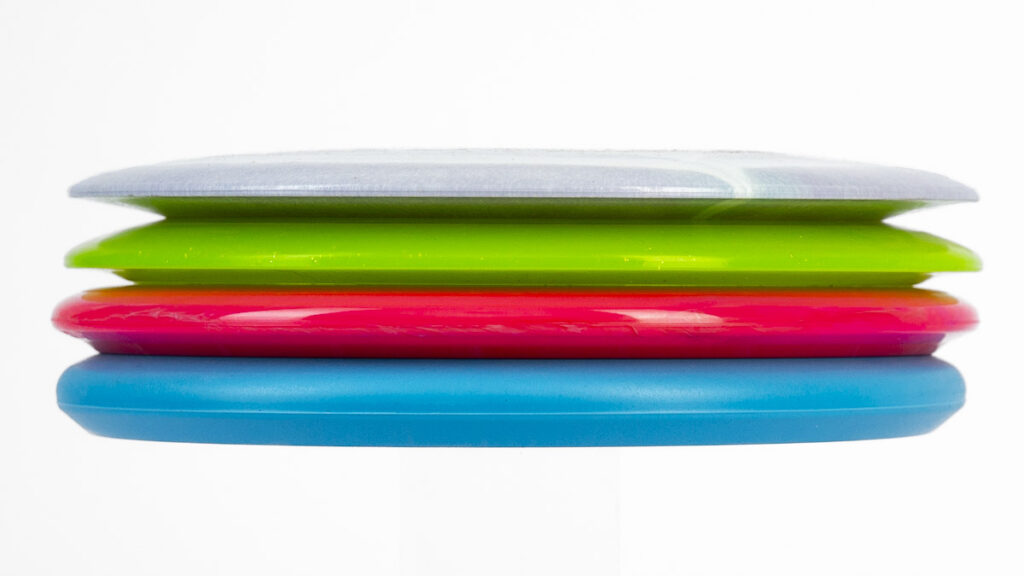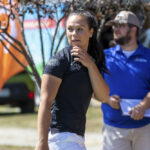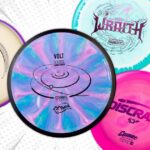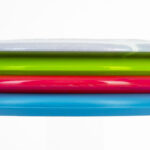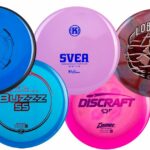Disc golf is a sport rich in variety, not just in terms of courses and playing styles but also in the discs themselves.
Understanding the different types of disc golf discs is crucial for beginners to navigate this sport effectively.
Each type of disc serves a distinct purpose, and knowing when to use each can significantly improve your game.
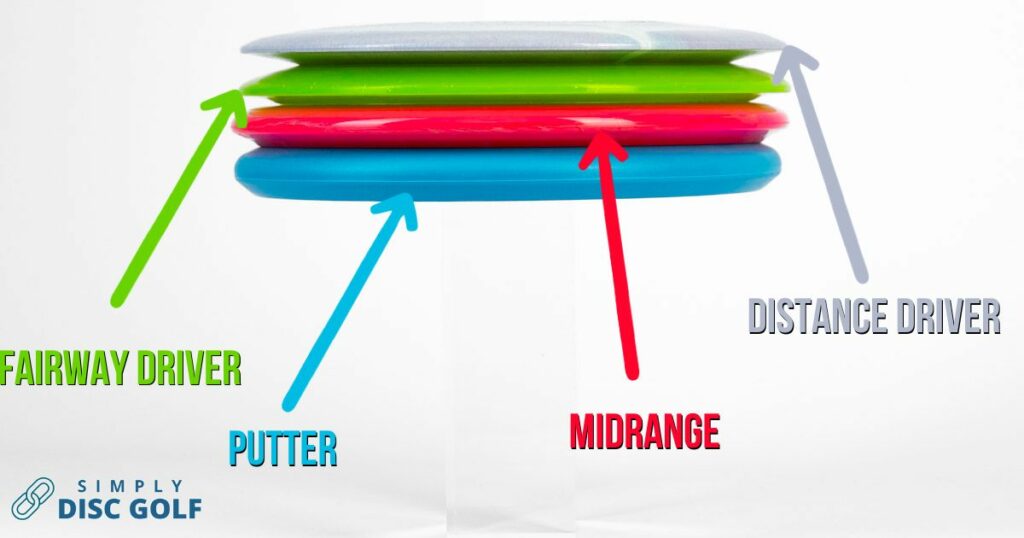
Distance Drivers
These are the speedsters of disc golf. Distance drivers are designed to cut through the air efficiently for maximum distance, thanks to their smaller diameter and sharper edge. They’re similar to the sprinters in track and field – built for speed and distance.

However, they require a high arm speed to be effective and can be unpredictable for beginners.
Think of them as the double-edged swords of disc golf, offering great rewards but also great challenges. They’re typically used off the tee to cover long distances on the fairway.
Key Characteristics:
- Sharp edges and wide rims.
- High speed but potentially less control.
- Ideal for experienced players with strong arm speed.
Fairway Drivers
Fairway drivers are the middle ground between distance drivers and midranges. They offer a blend of distance and control, making them versatile for various shots. These discs have slightly smaller rims than distance drivers and are easier to control.

They’re great for tight lines, straighter flights, and shorter drives. Beginners often find understable fairway drivers more forgiving than higher speed distance drivers.
Key Characteristics:
- Balanced distance and control.
- Smaller rims and rounded edges.
- Suitable for both experienced and inexperienced players.
Midrange Discs
Midranges are the Swiss Army knives of disc golf.
They’re designed for control and accuracy, making them ideal for approach shots and shorter drives. These discs fly straighter and are easier to maneuver than drivers. They have a flatter top and smaller rim, making them a staple in any player’s bag.

Understable midranges are especially recommended for beginners due to how easy they are to get to fly straight. They are also great for players with slow arm speed.
Key Characteristics:
- Straight flight paths.
- Flatter tops and smaller rims for easier control.
- Essential for approach shots and navigating narrow fairways.
Read Next: Easy Understable Midrange Discs To Throw
Approach Discs
These discs are specifically tailored to bridge the gap between putters and midranges.
Approach discs are perfect for short-range shots where a putter may fall short, but a midrange might be too powerful. They resemble midranges but are sized more like a putter, providing controlled flight paths and better accuracy for approach shots.
Putters
Disc golf putters are the slowest and most precise discs, designed for putting into the basket and short-range shots. They have a more blunt edge, making them less prone to bouncing or rolling away after landing.

Putters are essential for the endgame and can also be used effectively for controlled approach shots.
Key Characteristics:
- Slow and steady flight.
- Blunt edges for reduced bounce and roll.
- Crucial for short-range shots and putting.
Read Next: 9 Helpful Tips For Beginners
Why Different Discs?
Each disc type serves a specific function in the game. Drivers are for distance, midranges for control, and putters for precision. Additionally, different discs are designed to perform in various conditions, like cutting through the wind or navigating tight fairways. Also, let’s be honest: collecting different discs is part of the fun of disc golf!
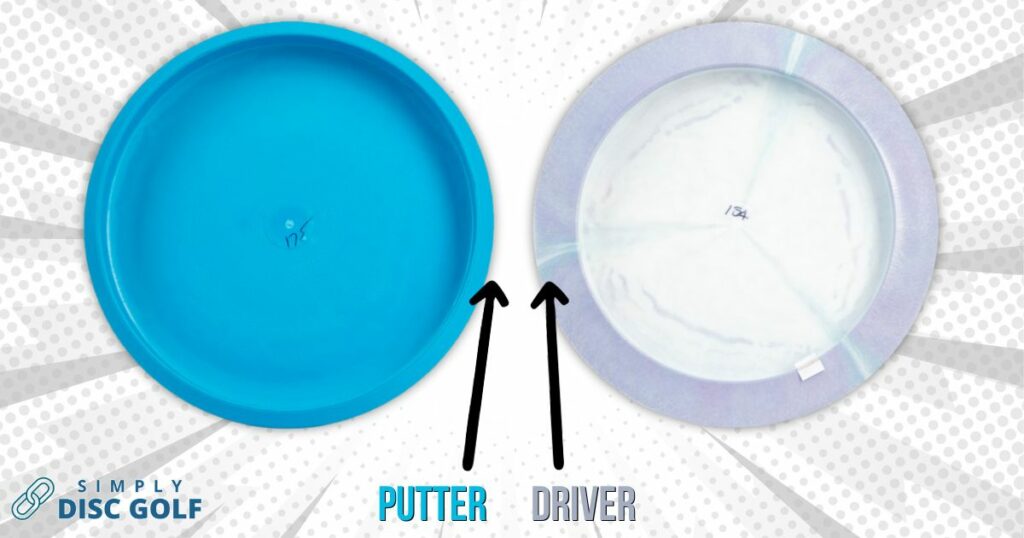
Understanding Flight Paths
The flight path of a disc golf disc is typically described using four attributes: speed, glide, turn, and fade.
- Speed is how fast a disc needs to be thrown to achieve its intended flight.
- Glide refers to the disc’s ability to maintain loft during flight.
- Turn indicates the tendency of a disc to curve right (for a right-handed backhand throw) during the initial part of the flight.
- Fade is the disc’s tendency to hook left as it slows down at the end of the flight.
Different combinations of these attributes make each disc unique and suitable for specific situations on the course. You can read all about disc golf disc numbers here.
Understanding the different types of disc golf discs is key to improving your game. Experiment with various discs to find the ones that best suit your style and enhance your performance on the course. Remember, in disc golf, the right disc can make all the difference!
Check out these forehand discs for beginners, and then my favorite discs for backhand throws!

